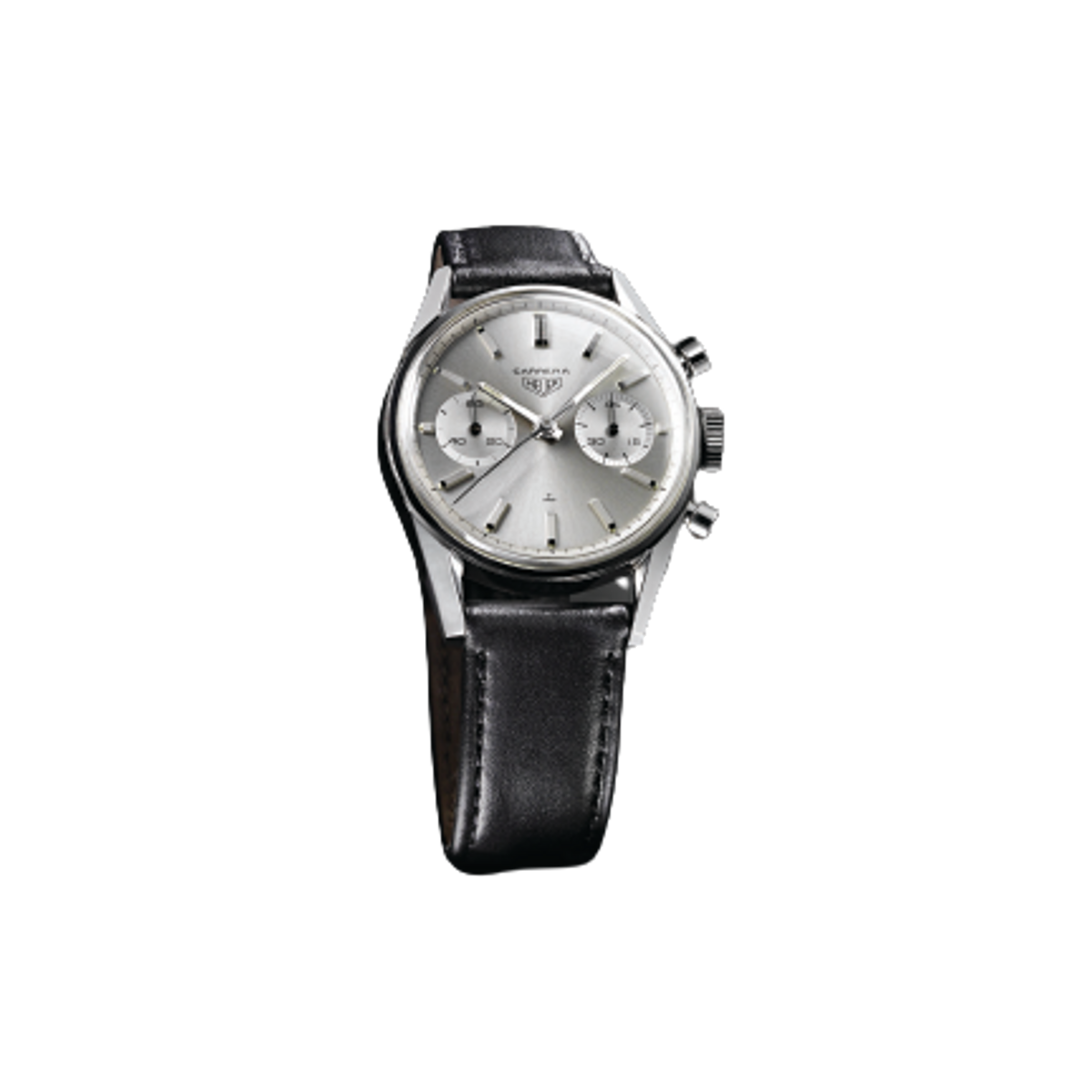Launch Year
1963
Functions
hours, minutes, seconds, chronograph
Movement
mechanical manual-winding
Distinctive features
chronograph developed for racing drivers, seconds scale on the inner bezel ring
Carrera: since 1963 this name has resonated within the watch industry thanks to a succession of watches featuring multiple faces while maintaining their distinctive identity. A mainstay of the brand from the first generation through to the smartwatches of the 2010s, the Carrera was born from Jack Heuer’s wish to create a chronograph that would meet the specific needs of racing drivers. In developing this eminently legible and shock-resistant timepiece, aesthetic inspiration was drawn from the architectural work of Oscar Niemeyer, the sensual lines of furniture by Eero Saarinen, as well as from the graphic clarity of Pop Art. In all these respects, the Carrera was firmly rooted in its era. Jack Heuer had the brilliant idea of borrowing its name from the legendary race run in Mexico during the 1950s and regarded as one of the most grueling in the world: the Carrera Panamericana.
The very first 1963 Carrera was distinguished by its pure lines and extreme legibility. The round case was sculpted in steel. Two counters stood out against the metallic dial, while the seconds scale accentuated the inner bezel ring. Behind the scenes, time was measured by a mechanical manual-winding movement. In 1965 the Carrera underwent a slight change by unveiling the famous black and white ‘panda’ dial, before shifting up to high gear from 1969 when it welcomed the very first self-winding chronograph movement: the legendary Calibre 11. This was a first that would appeal to a number of exceptional drivers including Jacky Ickx, Clay Regazzoni and Jody Scheckter in the 1970s/80s, later followed by great names of Formula 1 such as Lewis Hamilton, Alain Prost and Kimi Räikkönen, among others.
After a hiatus following the sweeping transformations that came in the wake of the quartz crisis, the collection made its comeback in 1996 with the TAG Heuer Carrera chronograph. Numerous technical and aesthetic variations punctuated the following decade. Among the most striking was the first mechanical chronograph with hundredth of a second precision, unveiled in 2005. In 2010 the Carrera welcomed the famous Calibre 1887, a chronograph developed and assembled in-house. In 2012 TAG Heuer launched the Carrera Mikrogirder, a chronograph equipped with a linear escapement. Its central hand performed 20 rotations per second and its accuracy was a stunning 5/10,000 of a second. Three years later, the Carrera underwent a further transformation with the TAG Heuer Carrera – Heuer 01, with a new case, new construction, new design and new movement. And this was just the beginning: the Carrera was again the focus of attention in 2016 as the Heuer-02T: a self-winding, COSC-certified chronograph tourbillon for under CHF 15,000. The Heuer 02 chronograph movement would go on to equip other models in the collection, and was also the movement TAG Heuer chose when it revisited the Carrera range in 2020 for its 160th anniversary. The brand presented a 44mm sports iteration and a vintage-inspired model in a 42mm size. The following year, that of a new partnership between TAG Heuer and Porsche, the Carrera broke with tradition. After more than half a century of chronographs, three-hand models without a chrono were introduced. Innovation was still at the heart of the collection: the Carrera Plasma Tourbillon Nanograph burst onto the scene in 2022, set with lab-grown diamonds and powered by a COSC-certified movement with a TAG Heuer exclusive carbon hairspring. Never missing a beat, the Carrera also took the brand into the connected watch market.
Key Characteristics
• Chronograph made in 1963 for racing drivers
